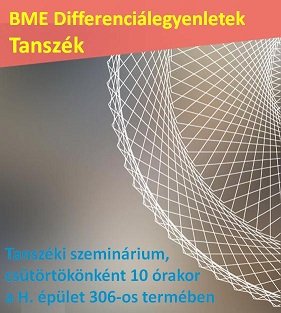
MEGHÍVÓ
Szeretettel várjuk a BME-ELTE Alkalmazott Analízis
Szemináriumára
Előadás ideje, helye:
2016. október 20-án (csütörtök), 10:15 órakor a BME H.306 teremben
Előadó:
Ladics Tamás
Absztrakt:
Error analysis of waveform relaxation method for reaction-diffusion equations
The method of waveform relaxation (WR) is an iterative method which can be applied for a large class of problems. It was first used to solve a system of ordinary differential equations describing large scale circuits. Since then many works have been devoted to investigate the convergence of the method for different types of problems, for example reaction--diffusion equations, delay differential equations. All of them consider time dependent problems that are either a system of ODEs originally or obtained from partial differential equations by spatial discretization. The key to prove convergence in every case is the Lipschitz property of the function acting on the right hand side.
In PDEs describing diffusion or advection processes the spatial differentiation is not a Lipschitz-continuous operation. Consequently the usual formulation of WR fails when the method is applied directly on reaction-diffusion or reaction-advection problems. Furthermore the convergence rates of the spatially discretized problem depend on the discretization parameter, thus the results can not automatically be transferred to the original continuous model.
In this talk, I propose to apply the WR method directly on the continuous problem. Using the concept of strongly continuous one-parameter semigroups a large class of continuous problems can be discussed, including systems of reaction-diffusion and reaction-advection equations in multiple spatial dimensions. Better error estimations can be given, that are also explicit.
After that the subproblems can be solved in each iteration numerically, with spatial discretization. This scenario allows to investigate the effect of the numerical treatment as well, an overall error estimation can be formulated which includes the iteration error and the cumulative numerical error.
Faster convergence can be achieved by dividing the time interval into subintervals and applying WR on these time windows one after another. This procedure is called windowing. Convergence of windowing is proven for a large class of PDEs.
(The talk will be in Hungarian.)
------------------------------------------------------------------
A szervezők
(Faragó István, Karátson János, Horváth Róbert, Mincsovics Miklós)
A szeminárium honlapja: http://math.bme.hu/AlkAnalSzemi
